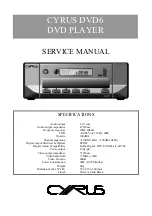
Rev 1.5
Page 4
Introduction to the FTP transfer protocol
FTP = File Transfer protocol.
After electronic mail and the WEB, FTP is another Internet service that evolutions in
technology have made much easier to use, but the aspect of which is still not very user-
friendly.
This service, with email and discussion groups, were the only tools in existence before the
appearance of the Web in 1990, and were at that time used mostly by research centres and
universities.
What does it do?
Everything is (almost) said in the title, and boils down to the possibility to transfer files to or
from other connected computers.
All over the world, millions of multimedia files (documents, latest versions of navigators,
plug-ins, utilities, shareware or freeware programmes, images, sound, videos, drivers, games,
fonts.... anything and everything!) are stored in directories on FTP sites, commonly called
FTP servers.
The ALPEG players are themselves ftp servers.
The programmes used to communicate with these FTP servers are called quite simply
FTP
clients.
Here again we encounter the notion of Client/Server, where the client is the one who benefits
from the operation and the server is the one that makes itself available to you.
======================================================
Between two connected computers (even different ones: Mac, PC, Unix...) that use the same
FTP protocol, there will be
transfer
of files on the network.
The size of the file to be transferred is unlimited, however, it often conditions the length of the
connection.
-
Download,
means to import a document from a server to your computer.
-
Upload,
means to export (send) a document from your computer to a server.
It goes without saying that the above definitions reflect your position as a user, but the same
terms apply during transfer between two servers, which then function as relays.
Who has access to it?
Everyone doesn't have access everywhere, and for example the directory of my site is
protected by a code. It is usually this way for the server of a company storing files which are
often confidential, and reserved for managers and external heads of agencies, or in
universities, where the entry of certain documents is reserved for its students and teaching
staff only. You must know the
password
to have access to it.
Other FTP sites are freely accessible without a password, and you can go "shopping" there
with complete peace of mind. Sometimes it all happens without formalities, or some ask you
to fill in the identifying input field beforehand (your login = your name) that you simply
replace with the word
anonymous
and then to give your email address as password. This
service is known by the name of
"anonymous FTP site"
.






































